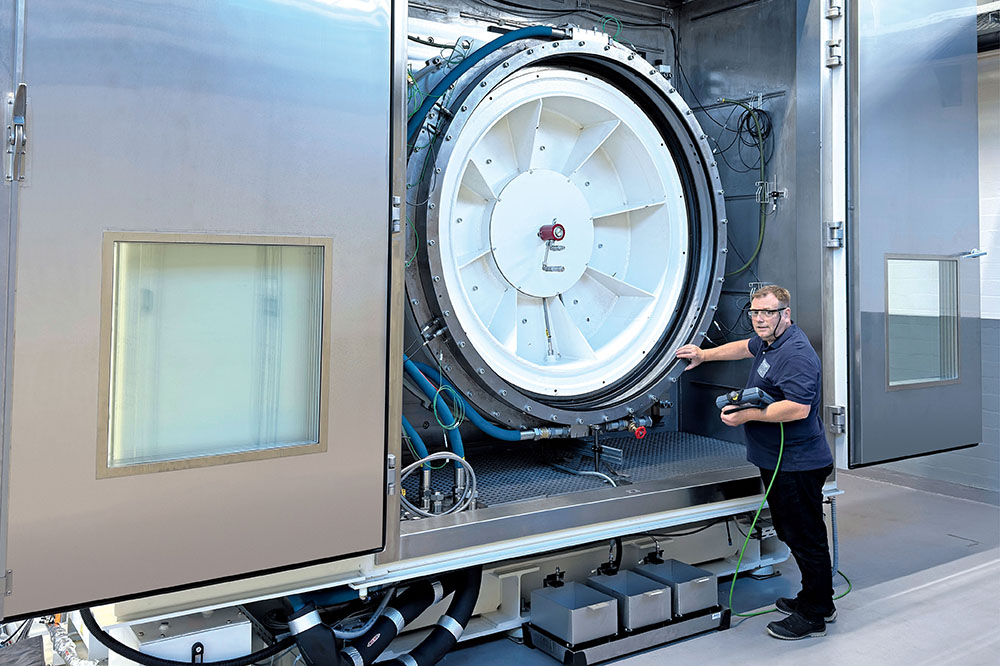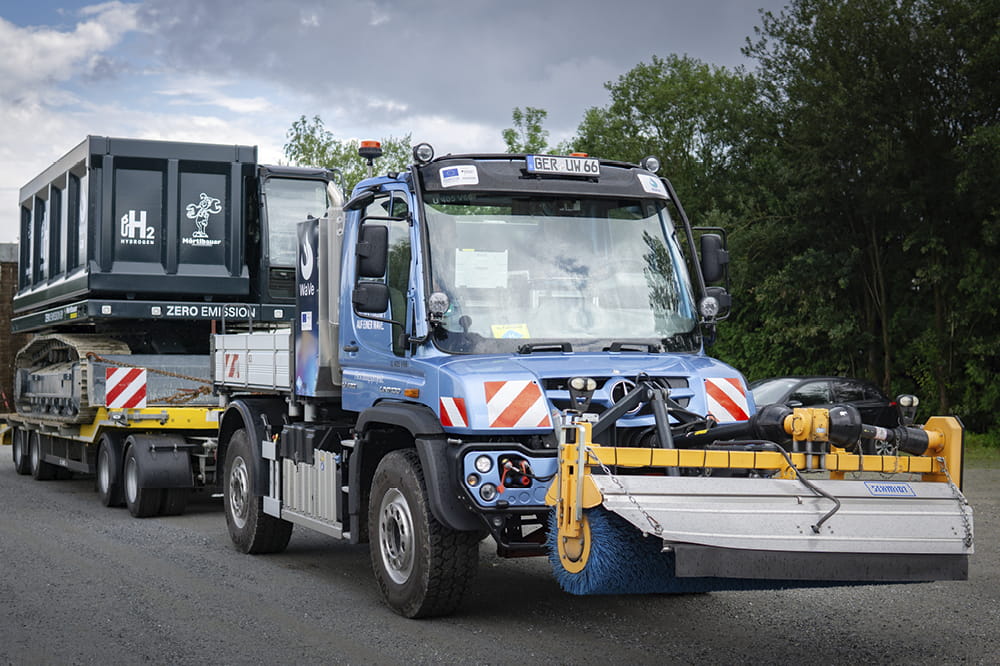Obtain news and background information about sealing technology, get in touch with innovative products – subscribe to the free e-mail newsletter.

29.08.2023 | Story
Human Power Plant
The human body is more than a consumer of energy. It is actually a producer as well – and delivers some of it to the environment. So, could our bodies be the source of useful energy?
Humans are electrified in the truest sense of the word. With every step, muscle contraction and reaction in our cells, our bodies produce energy. At rest, the human body generates an average of 100 watts of output. During sports activities, it reaches 300 to 400 watts. That’s the equivalent of burning 2,000 calories a day. Or, from a different perspective, the energy used by an LED floodlight over a 24-hour period. The body itself uses a large share of the energy it produces: for thinking, for movement or for organs and cells. It even consumes energy at night. What’s left escapes into the environment as heat.
Body Heat, Nature’s Own Furnace
A room full of people generates heat just by their presence. The warmth of their bodies functions as a natural heating system. And it can also be used on a larger scale: One example is the Mall of America, the largest shopping center in the United States. Every year, 42 million shoppers make their way through this consumer paradise near Minneapolis, generating comfortable temperatures in the process. Even without central heating, a temperature of 21°C (70°F) prevails in winter. Body energy is also used systematically in Sweden. The warmth of 250,000 travelers builds up each day at the main train station in Stockholm. It is captured by heat exchangers before dissipating without effect. A system of underground water tanks and pipes stores the energy and conducts it into the heating system of a neighboring office building.
Walking Generates Energy
If you look at the human body as a power plant, you can extrapolate the usable energy. For example, 1 watt of energy can toast 133 slices of bread or blow-dry your hair for an hour. So, could household appliances be run with the help of energy from our bodies? The idea does not seem so far off. After all, radios were invented in the 1940s that could be powered by cranking. Progress in batteries soon made crank radios unnecessary. But dynamos on bicycles are still in use in many places, generating electricity purely by muscle power. The principle is now in general use in some parts of the world. An American startup has installed four streetlamps on a public square in Las Vegas that draw electricity from sunlight and the footfalls of passersby. In addition to a cap made of solar cells, the lamps are equipped with kinetic tiles on the ground. The tiles sink slightly when they are stepped on, much as a bathroom scale does. The mechanical energy is transferred to small generators directly under the tiles. They transform the kinetic energy into electricity. Each footfall can generate 4 to 8 watts, depending on the amount of pressure.
Dancing, Sweating for More Wattage
Night clubs have also made use of this kinetic energy; operators are installing kinetic plates in the floor. The more energetically the guests dance, the more electricity is generated. In Glasgow, the Scottish club SWG3 is the first of its kind. It draws body heat from the dancers while transforming the kinetic energy. Heat pumps and fluids capture the heat in the interior and feed the energy derived from it directly into the club’s air-conditioning system to cool the guests.
The concept of using human-generated energy is neither far-fetched nor new. But how far can the concept take us? What are the limits of the human body as a power plant? So far, the answer is sobering. Compared to other renewable energy sources such as wind or solar power, body energy is not available on a large scale. It can certainly be used to generate enough electricity for a few streetlamps, but the needs of a city or even a village clearly exceed its capacities.
Opportunities for Small Electronic Devices
So, the concepts for its use must be limited and small in scale. With this in mind, a Swiss startup now plans to introduce a new kind of wearable, not merely worn on the body but powered by it as well. It has a prototype for a wristwatch that operates with the help of thermoelectric generators. One side of the mini-generator lies right against the user’s skin while the other is adjacent to the clockwork. The temperature difference between the body and the material generates the energy that powers the watch.
Body energy holds real potential for small electronic devices. Various manufacturers are now experimenting with self-powered hearing aids and pacemakers powered by heartbeats. Piezo fibers that charge smartphones could conceivably be sewn into clothing. These fibers transform mechanical into electrical energy. If the last idea is more fiction than reality, it still offers a major advantage, even if the human power plant will likely play a secondary role among the alternative forms of energy: There are obviously billions of people in the world. Even if the scale of the technology is small, there is huge potential lurking in such large numbers.
More news on the subject Renewable Energies

Join Us!
Experience Freudenberg Sealing Technologies, its products and service offerings in text and videos, network with colleagues and stakeholders, and make valuable business contacts.
Connect on LinkedIn! open_in_new











